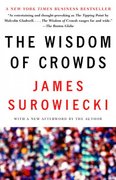Introduction and a Review You may recall the definitions of labor (L) and capital (K) from your principles of microeconomics. Of course, there can be additional inputs other than labor and capital. Let's call all other inputs materials (M). The definitions of labor and materials are relatively straightforward. You pay people or pay for things to be used for one period. For example, you pay a worker an hourly wage and they work for one hour and no more. For materials, you pay for a piece of wood that you use to build a birdhouse and once you build the birdhouse, the wood is no longer usable for other birdhouses. Capital is a bit more interesting. Capital an input that you can use more than once, most commonly thought of as some kind of machine. We also often think of capital as an "asset" that you can own and are able to resell. For simplicity, assume the value at which you can resell it is equal to the amount you paid for it minus how much the capital has "depreciated". In other words, how much value have you lost in the machine because you've been using it. Assignment For your assignment, think of any good that you know how to produce (or at least mostly know how to produce). Name that good and then answer the following questions: 1. Name all the inputs you need to produce this good. If there are a lot of inputs, feel free to group them together to make it easier. Categorize each of the inputs into either labor, materials or capital. Are there any inputs that you don't think fall into one of those categories? If so, explain why you don't think they belong in one of those categories. 2. We've learned about four types of production functions: Cobb-Douglas, Perfect Substitutes and Perfect Complements, and Constant Elasticity of Substitution (CES).' Based on how you understand the production process for the good you've chosen, which production function is closest to representing it? It doesn't have to be a perfect fit, but explain your reasoning. It's possible your production process is a hybrid of two of the production functions or maybe it doesn't fit the mold of any of them. 3. Graph a few points on a representative isoquant. It doesn't have to be perfect, but just give you an idea of what it might look like







